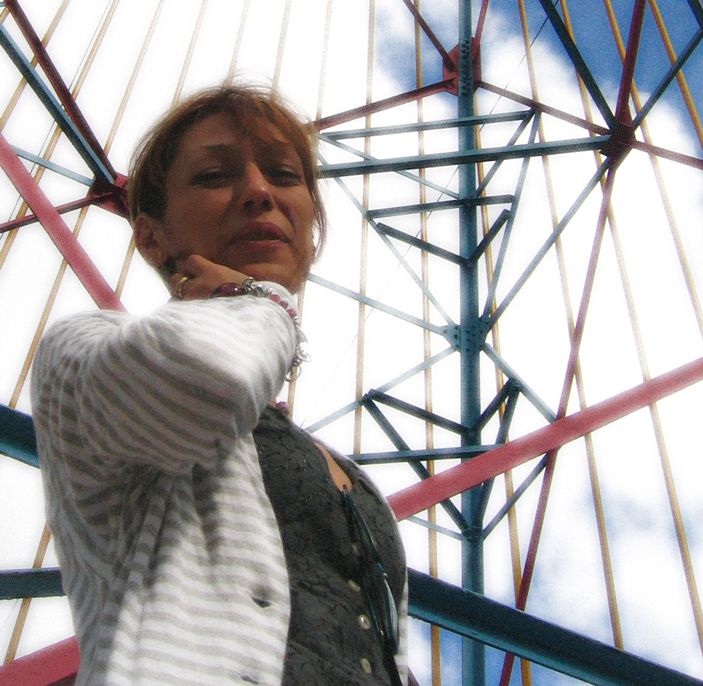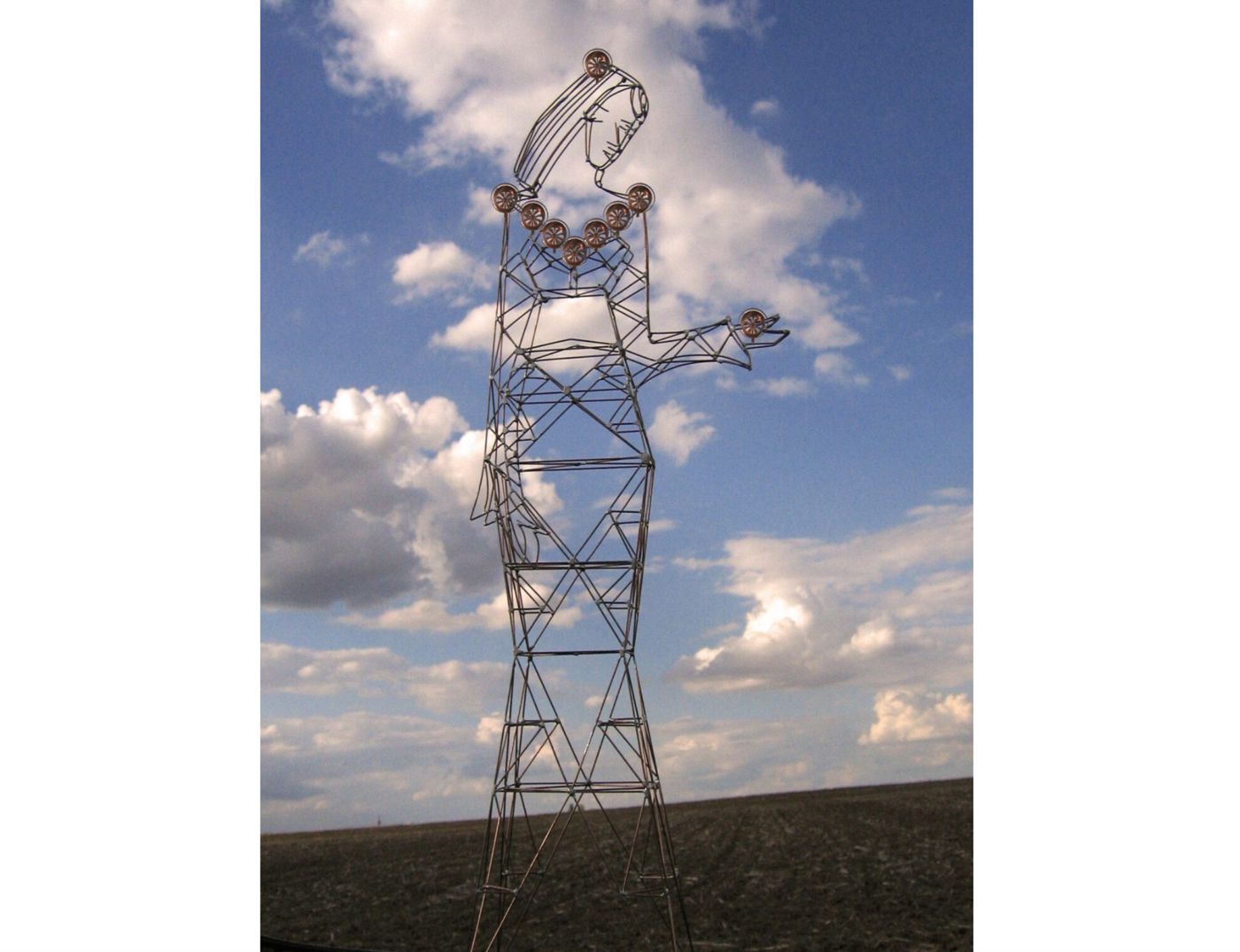Along highways, across fields, and in the middle of public squares — Elena Paroucheva brings art out of the museums and into our daily lives.
Multimedia artist Elena Paroucheva has created everything from paintings, sculptures, installations and performances. However, her most celebrated works are found firmly within the energy development field, hence recognized as an environmental artist by CIGRE (International Council on Large Electric Systems).

Paroucheva was born in Bulgaria in 1959. Like other Eastern European countries at the time, Bulgaria was under a totalitarian regime, where assimilation campaigns were conducted, labour camps were built, and dissidents were executed. It wasn’t until 1990 that Bulgarians held their first free elections since 1931.
After graduating from the Beaux-Arts Department at the University of Veliko Tarnovo in 1983, Paroucheva became part of the intelligentsia confronting the regime that, among other things, would only allow official art in the style of Socialist Realism to be produced. During Paroucheva’s first solo exhibition in 1984, the KGB made an appearance to disrupt her display.
After moving to France in 1991 and working as an artist and teacher in the creative milieu, she devised what she later conceptualized as Electric Art — an artistic movement with the objective of making works of art out of the common urban landscape of power lines, windmills, and telecom towers.
The idea originated from an article. In 1999, while reading a newspaper, Paroucheva learned about the plan to move power lines underground in Paris starting in 2010. “I decided then to intervene in my own way, trying to keep a few towers as a symbol of our time,” she explains. “Rather than concealing them, I’d like to highlight them as menhirs of our time.”
One of her biggest projects, entitled Source, involved the transformation of giant electricity towers in the town of Amnéville, in France. These 34-meter-high transmission towers — also known as electricity pylons — of 6.8 tons, supporting 225,000-volt lines, were “dressed” in an orange, blue and yellow steel structure. “Journalists call it haute couture for haute tension,” Paroucheva quips. Also known as the Demoiselles d’Amnéville, the monumental installation has since become a popular tourist attraction.

Turning her sights onto Affordable and Clean Energy, one of the United Nations Sustainable Development Goals, Paroucheva has worked extensively in what she calls her Wind Art sculptures. One of her most recognized works is Ondine, most likely named after the fairy-tale water nymph. A beautiful copper structure in the shape of a woman, this unique installation holds several wind turbines that from afar look like jewelry around the woman’s neck.
“I’m looking for a connection between art and energy within the landscape, providing another perspective to the visual aspect of our environment and an artistic touch to our industrial heritage,” Paroucheva explains.
What is functional can also be beautiful. By creating harmony between industry and nature, Paroucheva invites us to unleash our imagination, to envision a world that inspires us wherever we look — to remind us that art belongs anywhere.
Find out more about the work of Elena Paroucheva on her website.
